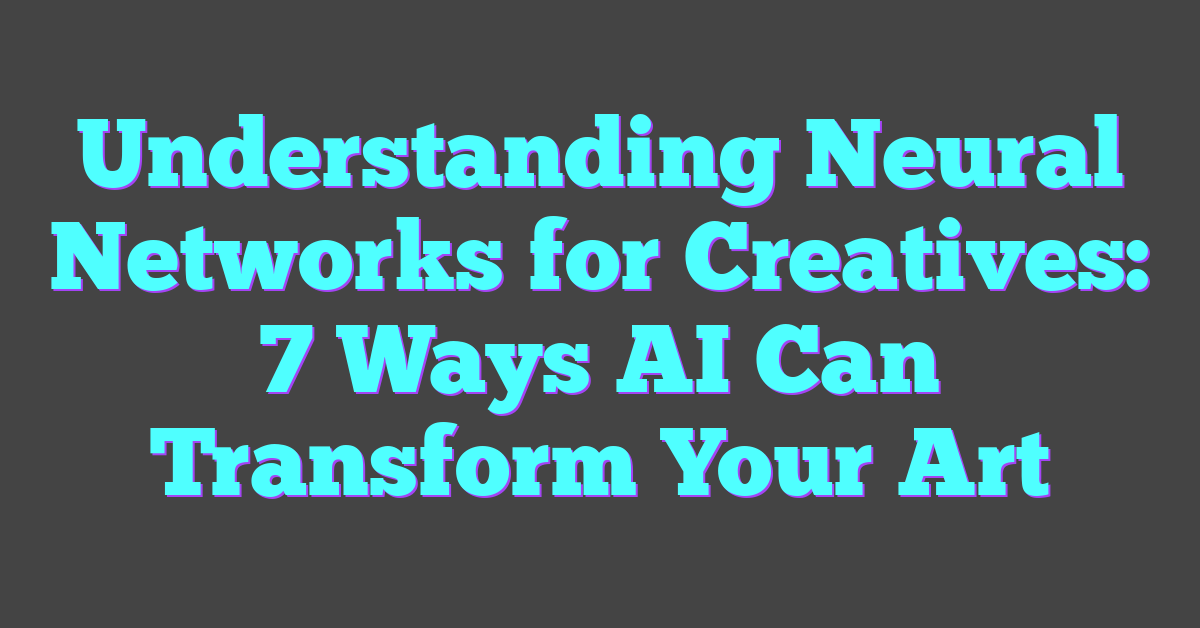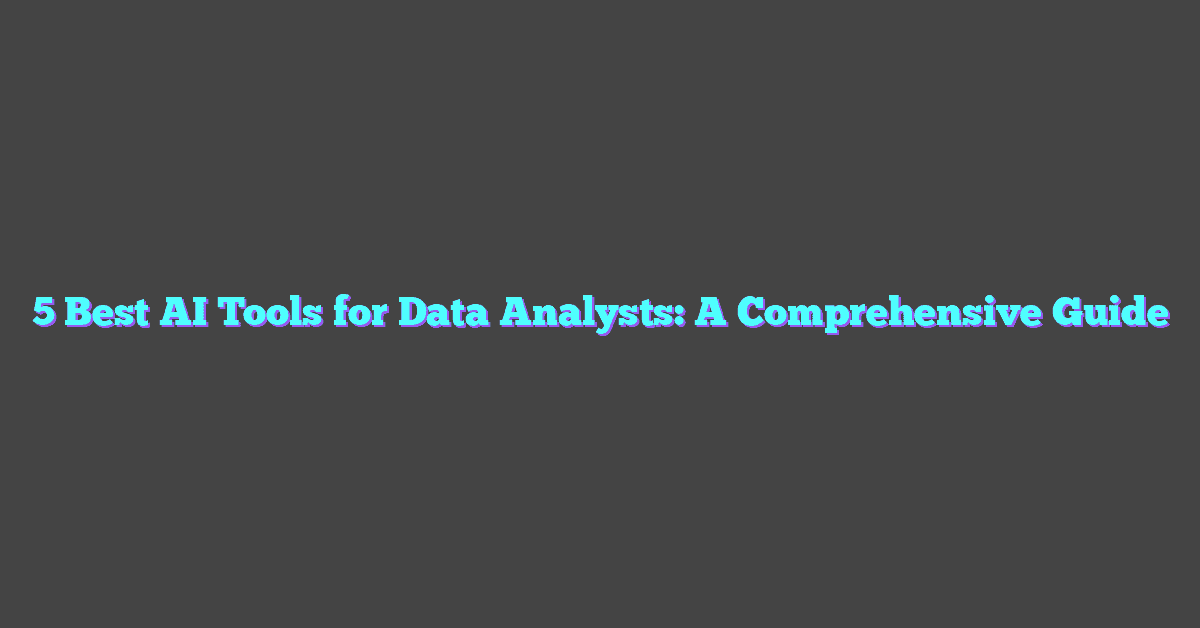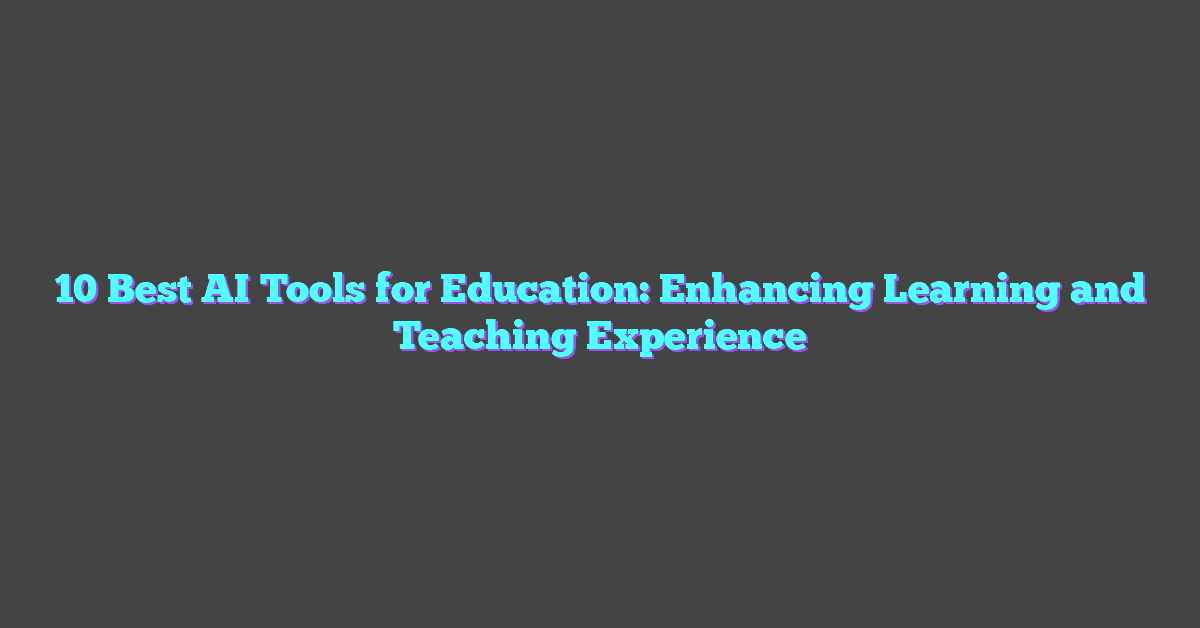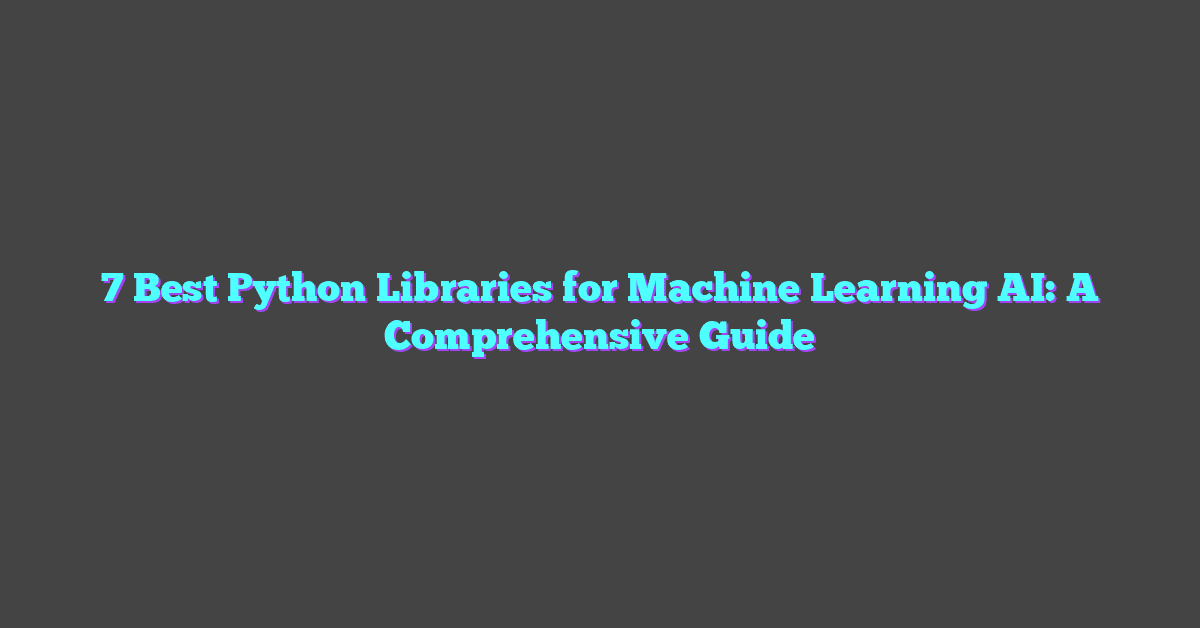Key Takeaways
- Neural networks are revolutionizing the creative landscape by enabling artists and designers to generate unique artworks and enhance their creative processes.
- These AI-powered tools streamline workflows by automating repetitive tasks, allowing creatives to focus on innovation and developing novel concepts.
- A wide range of platforms, such as TensorFlow, PyTorch, and RunwayML, make integrating neural networks accessible for creatives of all skill levels.
- Real-world applications showcase the practical benefits of neural networks in areas like art generation, music composition, graphic design, and interactive storytelling.
- Despite their potential, neural networks present technical and ethical challenges, including the need for high computational power and concerns about bias and intellectual property.
- Future trends indicate advancements in generative models, real-time creative tools, and enhanced human-AI collaboration, further empowering creators to push creative boundaries.
In today’s digital age, neural networks are revolutionizing the creative landscape. These powerful tools empower artists, designers, and creators to push boundaries and explore new possibilities like never before.
By blending technology with imagination, creatives can leverage neural networks to generate unique artworks, enhance designs, and streamline their creative processes. From predicting trends to automating mundane tasks, neural networks free up time and inspire innovative thinking. They enable the creation of complex patterns, stunning visuals, and even interactive experiences that captivate audiences.
This fusion of art and technology opens up exciting opportunities and redefines what it means to be creative in the modern world. Whether someone is a seasoned artist or just starting, understanding neural networks can give them an edge and spark their next big idea. Dive in to discover how these intelligent systems can transform the creative journey and unlock new realms of inspiration.

What Are Neural Networks?
Neural networks are computational models modeled after the human brain’s structure. They consist of layers of interconnected nodes, or neurons, that process data by recognizing patterns and making decisions. Each neural network includes an input layer, one or more hidden layers, and an output layer. Neurons in each layer receive inputs, apply weights, and pass the results through activation functions to produce outputs.
These networks learn by adjusting the weights based on the data they process, enabling them to improve accuracy over time. For creatives, neural networks offer tools for generating artwork, enhancing designs, and automating creative processes. For instance, generative adversarial networks (GANs) can create original images by learning from existing art, while convolutional neural networks (CNNs) excel at analyzing and improving visual content.
By integrating neural networks into their workflows, artists and designers can explore new creative avenues, streamline their processes, and achieve results that blend technology with artistic vision.
How Neural Networks Benefit Creatives
Neural networks offer various advantages to creatives, transforming their workflows and expanding their creative horizons.
Enhancing Artistic Expression
Neural networks generate unique artworks by mimicking diverse styles. Artists use generative adversarial networks (GANs) to create original images based on extensive training data. Additionally, convolutional neural networks (CNNs) refine visual content by enhancing details and applying artistic effects, providing a broader range of creative possibilities.
Streamlining Creative Processes
Neural networks automate repetitive tasks, allowing creatives to focus on innovation. AI-powered tools handle image resizing, color correction, and pattern recognition efficiently. By integrating these technologies, designers and artists reduce manual workload, accelerate workflows, and dedicate more time to developing novel concepts.
Popular Tools and Platforms
Creatives have access to a variety of tools and platforms that leverage neural networks to enhance their work. These resources simplify the integration of AI into creative processes.
Software Options
- TensorFlow: An open-source library developed by Google, TensorFlow supports various neural network architectures, enabling artists to create custom models for image generation and style transfer.
- PyTorch: Maintained by Facebook, PyTorch offers dynamic computation graphs, allowing for flexible model building and real-time adjustments, ideal for interactive creative projects.
- RunwayML: A user-friendly platform that provides pre-trained models for tasks like video editing, image synthesis, and interactive installations, catering specifically to artists and designers.
- DeepArt: Utilizes convolutional neural networks to transform photos into artworks mimicking different artistic styles, making it accessible for users without deep technical knowledge.
- Processing with ML Libraries: Combining the Processing programming language with machine learning libraries enables artists to create generative art and interactive visualizations seamlessly.
Accessible Resources
- Kaggle: Offers a vast repository of datasets and notebooks, allowing creatives to experiment with neural networks and share their projects with a community of developers and artists.
- Coursera and Udemy Courses: Provide structured learning paths on machine learning and neural networks, tailored for individuals looking to apply AI in creative fields.
- GitHub Repositories: Host numerous open-source projects and tutorials, enabling creatives to access and modify existing neural network implementations for their unique projects.
- Google Colab: A free cloud-based environment that supports Python coding and offers GPU acceleration, facilitating the training and deployment of neural networks without the need for local high-performance hardware.
- Creative AI Communities: Online forums and social media groups where artists and technologists collaborate, share insights, and access resources like pre-trained models and creative coding libraries.
Real-World Applications
Neural networks revolutionize various creative industries by enhancing efficiency and enabling innovative outputs. These applications demonstrate the practical impact of AI on creative processes.
Case Studies
- Art Generation
- DeepArt utilizes convolutional neural networks (CNNs) to transform photos into artworks mimicking styles of famous painters like Van Gogh and Picasso.
- Music Composition
- AIVA employs recurrent neural networks (RNNs) to compose original music pieces, assisting composers in creating symphonies and soundtracks.
- Graphic Design
- Canva’s Magic Resize feature leverages neural networks to automatically adjust designs for various platforms, such as social media and print media.
- Content Personalization
- Netflix uses neural networks to analyze viewer preferences, recommending personalized content based on viewing history and behavior patterns.
Success Stories
- Generative Art Exhibitions
- Artists using RunwayML showcased AI-generated artworks in international exhibitions, receiving acclaim for blending technology with traditional art forms.
- Automated Video Editing
- Adobe Premiere Pro integrated neural networks to offer features like scene detection and auto-color correction, reducing editing time by 30%.
- Virtual Fashion Design
- Designers at The Fabricant created virtual clothing using neural networks, enabling sustainable fashion practices and digital showrooms.
- Interactive Storytelling
- OpenAI’s GPT models powered interactive storytelling platforms, allowing writers to generate dynamic narratives and character dialogues in real-time.
Challenges and Considerations
Technical Limitations
Neural networks present several technical challenges for creatives. High computational power is required for training complex models, often necessitating specialized hardware like GPUs or TPUs. Data availability impacts performance; large, diverse datasets improve accuracy, but acquiring such data can be resource-intensive. Model interpretability remains limited, making it difficult to understand decision-making processes. Additionally, real-time processing demands can hinder applications that require immediate feedback, such as live installations or interactive media.
Ethical Implications
The use of neural networks in creative fields raises ethical concerns. Biases in training data can lead to skewed or unfair outputs, perpetuating stereotypes. Intellectual property issues emerge when AI-generated content mimics existing styles without proper attribution. Privacy concerns arise from the use of personal data in training models, potentially exposing sensitive information. Furthermore, the potential misuse of neural networks for creating deepfakes or misleading media poses significant risks to trust and authenticity in creative works.
Future Trends in Creative Neural Networks
Advancements in neural networks continue to reshape the creative landscape, offering new tools and opportunities for artists and creators. Emerging trends highlight the growing synergy between artificial intelligence and creative processes.
Enhanced Generative Models
Generative models like Generative Adversarial Networks (GANs) and diffusion models evolve, producing more realistic and diverse outputs. For instance, GANs generate high-resolution artwork, while diffusion models improve image and video synthesis quality.
Real-Time Creative Tools
Real-time applications enable instant feedback and iterative creation. Tools leveraging neural networks allow artists to see changes immediately, facilitating dynamic experimentation and faster workflow adjustments.
Personalized Creative Experiences
Neural networks tailor content to individual preferences. Personalized art, music, and design adapt to user tastes, enhancing engagement and creating unique experiences for each audience member.
Integration with AR and VR
Augmented Reality (AR) and Virtual Reality (VR) integrate with neural networks to create immersive environments. AI-driven content generation in AR/VR applications offers interactive and responsive creative experiences.
Improved Human-AI Collaboration
Future neural networks enhance collaboration between humans and AI. Tools assist artists in brainstorming, refining ideas, and executing complex tasks, fostering a more interactive creative partnership.
Ethical and Responsible AI
As neural networks become more integral to creativity, ethical considerations gain prominence. Ensuring fairness, transparency, and accountability in AI-generated content helps maintain trust and integrity in creative works.
Accessible AI Tools for Creatives
AI tools become more user-friendly, lowering the barrier to entry for creatives. Platforms offer intuitive interfaces and pre-trained models, enabling artists without technical expertise to leverage neural networks effectively.
Multimodal Models
Multimodal neural networks process and generate multiple types of data simultaneously. Combining text, images, and audio, these models enable richer and more versatile creative outputs, expanding the possibilities for innovative projects.
Enhanced Content Personalization
Content personalization using neural networks becomes more sophisticated. AI analyzes user data to create highly targeted and relevant creative content, improving user satisfaction and engagement.
Sustainable AI Practices
Developing energy-efficient neural networks addresses environmental concerns. Sustainable AI practices reduce the computational power required, making neural networks more eco-friendly and accessible for long-term creative use.
Expansion of Creative AI Communities
Growing communities support knowledge sharing and collaboration among creatives using neural networks. Online platforms and forums facilitate the exchange of ideas, resources, and best practices, driving collective innovation in the creative AI space.
| Future Trend | Description |
|---|---|
| Enhanced Generative Models | Improved GANs and diffusion models for higher quality outputs |
| Real-Time Creative Tools | Instant feedback and iterative creation processes |
| Personalized Creative Experiences | AI-tailored content based on individual preferences |
| Integration with AR and VR | Immersive environments powered by AI-generated content |
| Improved Human-AI Collaboration | Enhanced partnership between artists and AI tools |
| Ethical and Responsible AI | Focus on fairness, transparency, and accountability in AI-generated content |
| Accessible AI Tools for Creatives | User-friendly platforms with pre-trained models |
| Multimodal Models | Combining text, images, and audio for versatile creative outputs |
| Enhanced Content Personalization | Sophisticated targeting of creative content |
| Sustainable AI Practices | Energy-efficient neural networks for eco-friendly creativity |
| Expansion of Creative AI Communities | Increased collaboration and resource sharing among creatives |
These future trends demonstrate the dynamic evolution of neural networks in creative industries, promising even greater integration of AI technologies to empower and inspire creators.
Conclusion
Neural networks open up a world of possibilities for creatives. They blend technology with imagination, allowing artists and designers to push boundaries like never before. By embracing these advanced tools, creatives can focus more on their vision and less on repetitive tasks. The future looks bright as neural networks continue to evolve, offering even more innovative ways to express artistic ideas. Whether you’re a seasoned artist or just starting out, exploring neural networks can inspire new levels of creativity and drive your projects to new heights.




